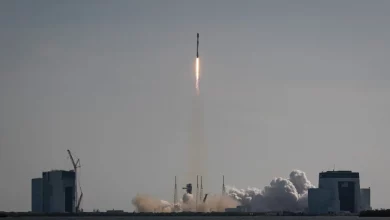Analysis: Ukraine’s drone and missile tactics transform battlefield

The Ukrainian Armed Forces launched a missile strike on the Sevastopol headquarters of the Russian Black Sea Fleet.
The Russian Defense Ministry reported that the “historic Black Sea Fleet headquarters building was damaged,” with independent sources claiming British-made Storm Shadow cruise missiles had been used in the attack.
This strike came after Ukrainian naval forces successfully carried out a special operation “causing serious damage” to the Saky airfield in Crimea. Reports show that Ukrainian forces used drones to overwhelm Russian air defenses, then launched Neptune missiles at the intended targets (Meduza, September 22).
Ukrainian drone attacks have increasingly targeted military objects on Russian territory. Perhaps the most striking example occurred with the strike on Russia’s Pskov airfield, some 700 kilometers from the Ukrainian border. According to Kyrylo Budanov, head of Ukrainian Defense Intelligence, the attack was launched from Russian territory (Pravda.com.ua, September 1). In early August 2023, the Ukrainian Secret Service conducted a special operation on the Port of Novorossiysk. Naval drones attacked the Olenogorsky Gornyak landing ship and the SIG oil tanker causing serious damage (see EDM, August 18).
Ukrainian drones and missiles are attacking Moscow’s city center in higher numbers in an effort to sow panic and discord among the Russian public (Dw.com/ru, August 1). Mykhailo Podolyak, an advisor in the Office of the President of Ukraine, recently declared on X (formerly Twitter) that Moscow is being pulled deeper into the conflict by “more unidentified drones, more collapse, more civil strife [and] more war” (Twitter.com/Podolyak_M). Due to this onslaught, the commander overseeing Moscow’s air defenses, Major General Konstantin Ogienko, was recently arrested on allegations of bribery and corruption (RBK, September 1).
Ukraine has expanded its use of naval drones in recent months to disrupt Russian positions in the Black Sea. In July 2023, Ukrainian forces once again attacked the Kerch Strait Bridge, this time with uncrewed surface vessels (USVs). The USVs blew up a significant portion of the bridge, causing serious disruptions to Russia’s supply logistics (Fakty.com.ua, July 17). In May, Kyiv confirmed the use of three naval drones in attacking the Ivan Khurs Russian reconnaissance ship near the Bosphorus Strait (Obozrevatel.com, May 25; see EDM, June 2).
The widespread use of drones has transformed defensive strategies on the battlefield. Early on, Ukrainian drones were able to capitalize on gaps in Russian electronic warfare (EW) capabilities. According to a report from the Royal United Services Institute, as of May 2023, Ukraine can now lose up to 10.000 drones a month due to Russia forces’ adaptations of their EW capabilities (Apostrophe.ua, May 23). Colonel Oleksandr Pivnenko, commander of the Ukrainian National Guard, claimed that a small unit can lose up to 20 drones per day due to difficulties in delivering supplies to the front due to constant shelling (Pravda.com.ua, July 31).
The increased use of drones and missiles strikes has not been lost on Russia. According to recent estimates, the Russian military has launched over 2,000 drone attacks utilizing Iranian-made Shahed drones (RBK, August 3). On July 31, Belarusian Defense Minister Viktor Khrenin met with Iranian Defense Minister Mohammad-Reza Ashtiani to discuss the possibility of setting up a “kamikaze” drone factory in Belarus to support the Russian invasion. Earlier, the United States had reported that Iran was helping Russia build a drone factory in Tatarstan (see EDM, March 6; RBK, August 2).
Moscow claims that it has taken steps to improve domestic production of drones. According to state-owned television outlet Russia-1, the production of ZALA Lancet combat drones has increased 50 times since the beginning of the full-scale invasion (Ukrainska Pravda, August 28). Other expert estimates, however, argue that such an increase is impossible due to serious problems in procuring critical parts and severe personnel shortages (see EDM, September 14). The Lancet was developed by ZALA Aero, with a maximum speed of 300 kilometers per hour (186 miles per hour) and a flight radius of 40 kilometers (25 miles) (Novyni.live, July 16). The average price of production is about $35,000, which makes it a relatively inexpensive weapon for Moscow.
Ukraine, too, has ramped up domestic drone production. Before stepping down, former Ukrainian Defense Minister Oleksii Reznikov announced, “This autumn there will be a boom in the production of various Ukrainian drones” (Ukrinform, September 3) For example, the Rubaka kamikaze drone costs $15,000 to produce per unit and has a range of over 500 kilometers (310 miles). It is meant to be an analogue to Iran’s Shahed-136 loitering munition. Unlike other kamikaze drones, the Rubaka is designed to strike at predetermined coordinates (5.ua, August 2). The Leleka-100 is a newer reconnaissance drone that was originally put into service in 2021. It can reach a top speed of 120 kilometers per hour (75 miles per hour), with a flight time of almost three hours and guaranteed flight range of 100 kilometers (62 miles) (RBK, December 22, 2022). It possesses encrypted video transmission capabilities, which makes it particularly effective in mapping out Russian positions.
In August 2023, Ukraine presented its first marine drone at the International Defense Industry Fair in Istanbul. The Magura V5 has various capabilities for conducting reconnaissance, surveillance and search-and-rescue operations at sea. Its range is estimated at 800 kilometers (500 miles) and can reach a top speed of 75 kilometers per hour (47 miles per hour). The unit can carry a payload weighing up to 320 kilograms (over 700 pounds). According to Nataliya Gumenyuk, head of the joint press center for Ukraine’s Operational Command South, such drones can cause serious damage to Russia’s Black Sea Fleet and other military units in and around Crimea (Focus.ua, August 3).
In November 2022, Ukrainian President Volodymyr Zelenskyy initiated the United24 fundraising campaign for a fleet of naval drones. The main task of these drones is to protect Ukrainian waters from cruise missiles launched from Russian positions in the Black Sea. They are also being considered for protection of grain shipments leaving Odesa (U24.gov.ua, accessed September 24). The same fundraising platform, together with the Ukrainian General Staff and Ministry of Digital Information, also supports the “Army of Drones” project (President.gov.ua, November 11, 2022). Ukrainian Minister of Digital Transformation Mykhailo Fedorov recently announced the transfer of 1,700 drones to the Ukrainian military as a result of these efforts (T.me/zedigital, July 26).
As it makes a more concerted push for Crimea, drones will continue to play a pivotal role in Ukraine’s counteroffensive. As of June 2023, the production of drones in Ukraine had increased by thousands and tens of thousands in some categories. According to Fedorov, more than 100 Ukrainian companies are engaged in the manufacture of drones and over 40 types of Ukrainian drones have already passed the commissioning procedure and are receiving state contracts (Suspilne.media, June 27).
Moving forward, Ukrainian forces will use increased drone attacks and missile strikes to disrupt Russian positions. And Russia’s air defenses may be further overwhelmed and unable to adapt accordingly.





